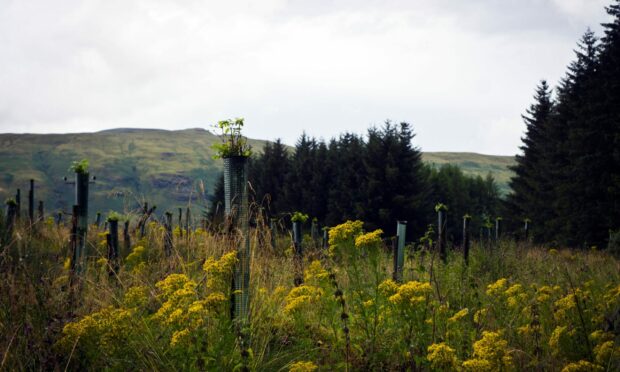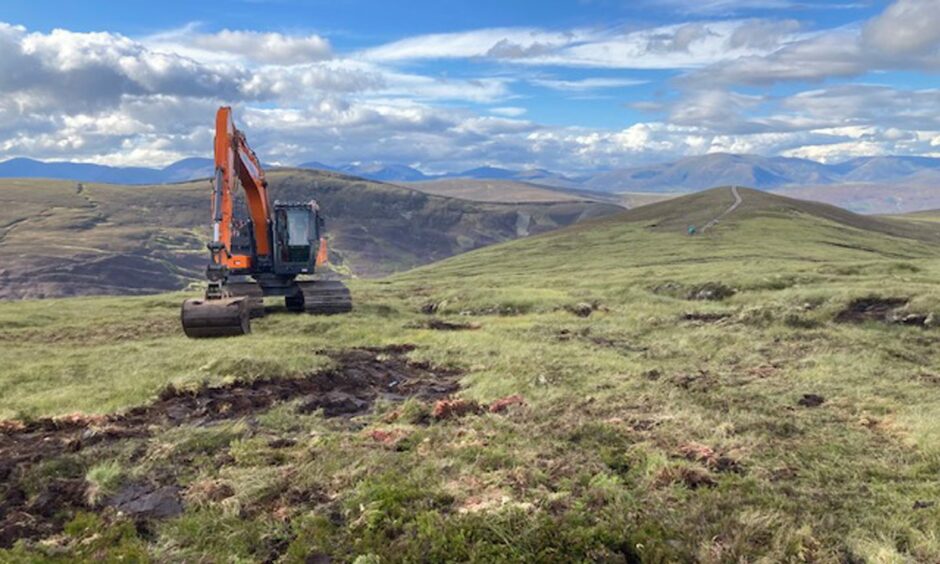The top 100 landowners in Scotland should be named in a “rich list” which shows how much public money they get, according to a former government minister.
Peter Peacock’s plan includes demands for an inquiry into the level of government handouts to already-wealthy estate owners.
The land reform campaigner, who served as education minister in Jack McConnell’s Holyrood administration, was one of the first prominent figures to call for action over “green lairds”.
This new generation of landowners is accused of sending land prices rocketing while scrambling to cash-in on government grants and tax breaks for planting trees, restoring peatland and other work to help meet climate change targets.
Mr Peacock, a former Highland Council convener, says many people have become “very rich” as a result of rising land values, and are “growing richer by the day” because they are also being handed huge subsidies.
‘Time for a full investigation’
He said: “It is time for a full investigation into how many millions of public subsidies is being given to the top 100 private landowners every year and by just how much the value of their land has grown at the same time.
“It seems wrong for hard-pressed taxpayers to be subsidising some very wealthy people and corporate bodies, with no opportunity to share in the rapidly rising value of their land assets.”
He said local communities are now priced out of the Scottish land market.
“As a result, it seems it is only the super-rich that can now buy big areas of land and then watch its value grow and grow,” he added.
“Meanwhile lots of ordinary people who would love a bit of land to work, to grow trees for climate benefit for example can’t get that opportunity because the market is cornered by the super-rich.”
Mr Peacock fears the growth of the community ownership movement is “stalling” because land prices are soaring.
Rich list
“We need to shed light on the issues and create a land rich list as a prelude to significant reform and redirecting public spending in land to where it can produce shared benefits, not grow private wealth,” he said.
“The Scottish Government could launch an investigation into this, or it is something the Scottish Parliament could do, and the sooner the better.”
About 400 owners are estimated to control half of all Scotland’s privately owned land.
Land Reform minister Mairi McAllan has said the Scottish Government is “fully committed” to tackling the adverse effects of scale and concentration of landownership, while “empowering communities in the process”.
The Scottish Government held a consultation on a new land reform bill between July and October last year, receiving more than 540 responses.
It is proposed that the Bill, which is due to be introduced by the end of this year, will strengthen rules around public subsidies, including a threat of losing funding if tougher regulations are flouted.
There could also be a requirement that the land related to a subsidy claim be registered in the Land Register of Scotland.
Many campaigners want the government to go further, including capping the amount of land that can be owned by one individual or company.
Private investment
Stephen Young, head of policy at Scottish Land & Estates, said the focus should be on using land productively to address the climate crisis, not simply who owns it.
“Many environmental and agricultural schemes to support government policies require substantial private investment,” he said.
“In many cases, without an element of public funding to sit alongside, such projects would be simply unviable.
“There is ample room for private, community, charity and public landownership and it should not be the case that ownership models are pitted against each other.”
Mr Young said that communities and individuals should have the opportunity to use, own and manage land, but that investing at scale can also be of huge benefit.
“Community owners have been on record themselves as acknowledging the advantages of managing land at scale and fragmentation of ownership will make it more difficult to undertake carbon sequestration projects at a landscape level,” he said.
A Scottish Government spokesman said it had a “clear” commitment to supporting and increasing community ownership of land and assets.
“Through Community Rights to Buy and the Scottish Land Fund, which will be doubled to £20m by 2026, more communities than ever across Scotland are taking ownership of local buildings and assets,” he said
“The number of assets known to be in community ownership has increased eightfold over the past 20 years, and there is now almost four times as much community owned land compared to the year 2000.
“These sustained upwards trends show real progress and delivery of the Scottish Government’s ambitions for land reform.
“The consultation on our ambitious Land Reform Bill meanwhile included a range of proposals, including a public interest test on large scale land transfers and a new requirement for those seeking land-based subsidies to have their land registered in the Land Register, to ensure transparency around who benefits from public funding.
“This is the next step on Scotland’s land reform journey as we continue the work to pass more power to people and local communities, encourage and support responsible and diverse landownership and ensure communities have a say in how land in is used.”




Conversation